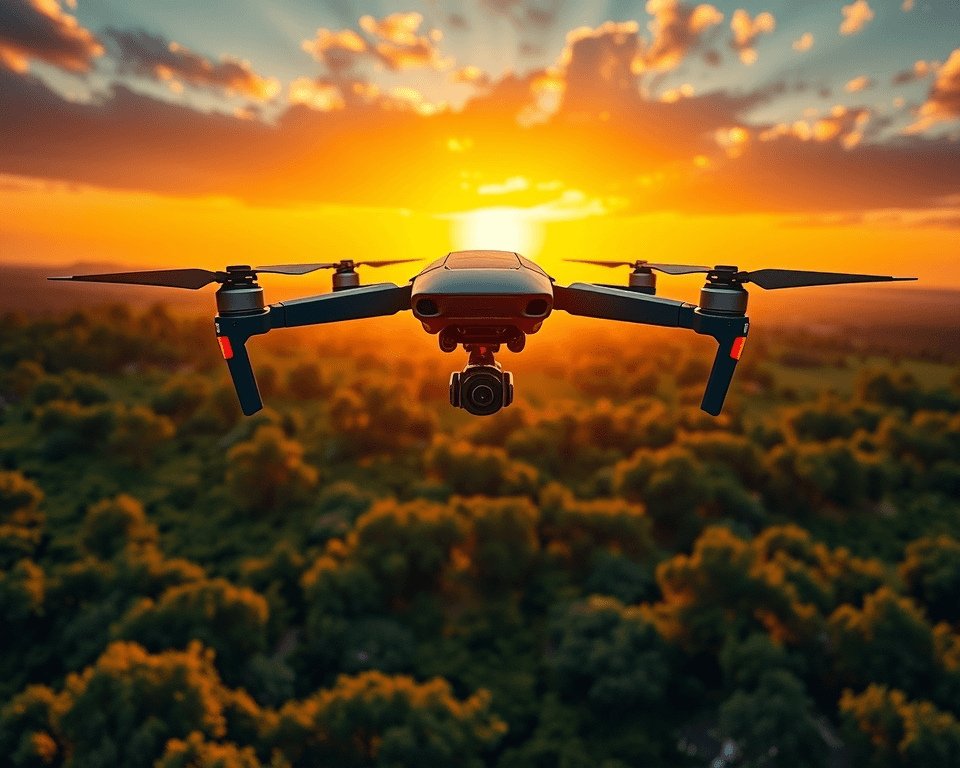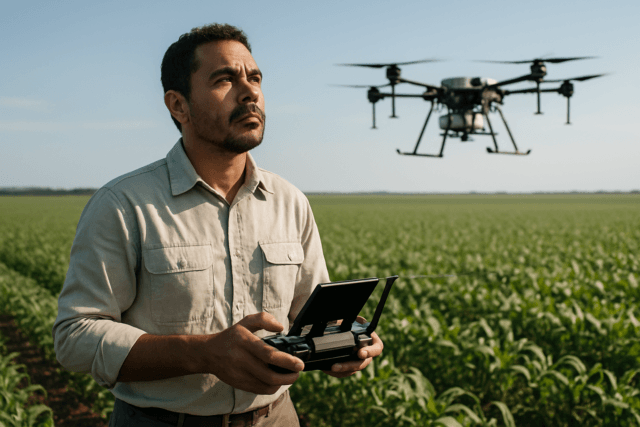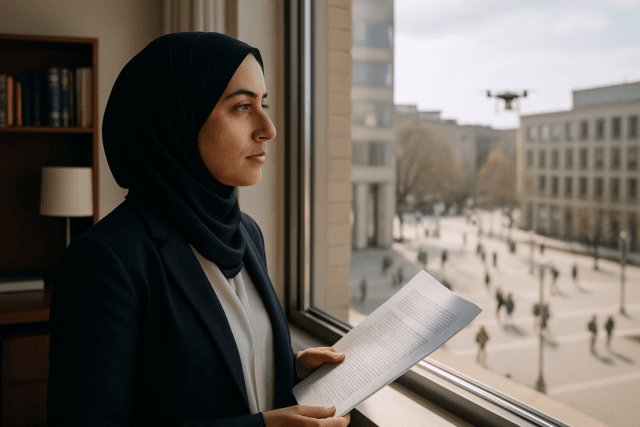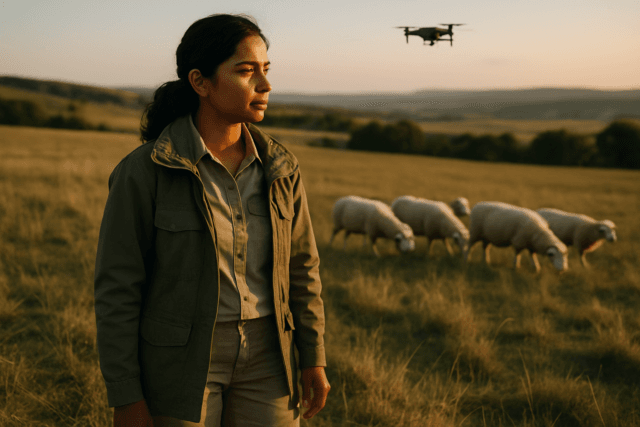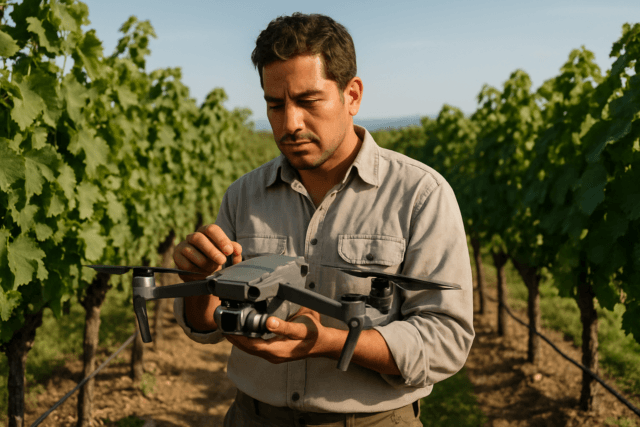Ready to take to the skies? Whether you’re a budding aerial photographer, a tech enthusiast, or simply looking for a new hobby, this comprehensive drone buying guide will navigate you through the key considerations, UK regulations, and top drone models in 2025.
What Type of Drone Pilot Are You?
Before diving into the specifics, it’s essential to identify your primary drone usage. This will significantly narrow down your options and ensure you choose a drone that aligns with your needs and aspirations.
- The Beginner: If you’re new to drones, prioritize ease of use, stability, and durability. Look for models with GPS stabilization, obstacle avoidance, and a robust build.
- The Aerial Photographer/Videographer: Image quality is paramount. Seek drones with high-resolution cameras, gimbals for stabilization, and adjustable camera settings.
- The Recreational Flyer: Fun and agility are key. Consider smaller, more nimble drones with various flight modes and potentially FPV (First Person View) capabilities.
- The Professional: Whether for surveying, filmmaking, or inspections, professional drones require longer flight times, high-quality cameras, and the ability to carry heavier payloads. Compliance with UK regulations is also crucial.
Key Considerations Before You Buy
Here’s a breakdown of the critical factors to consider when choosing your drone:
1. Camera Quality: Capture Stunning Aerial Imagery
The camera is often the most important feature, especially for aerial photography and videography.
- Resolution: Measured in megapixels (MP), resolution determines the level of detail in your images. For beginners, anything from 2MP will provide decent quality photos and videos. Full HD 1080p resolution is ideal for creating home or holiday videos. Serious enthusiasts should aim for 2.7K or 4K for a cinematic effect.
- Image Sensor: A larger sensor captures more light, resulting in better image quality, especially in low-light conditions. Common drone sensor sizes include 1/2.3 inch (entry-level), 1 inch (prosumer), APS-C, and full-frame (professional).
- Frame Rate: This determines the smoothness of your video footage. Standard rates include 24fps (cinematic), 30fps (standard video), and 60fps (smooth motion). Higher frame rates (120fps or 240fps) are ideal for slow-motion footage.
- Lens Quality: A good lens enhances clarity, reduces distortion, and captures wide, detailed shots.
- Image Stabilization: Essential for smooth, jitter-free footage. Gimbals mechanically stabilize the camera, while digital stabilization offers a software-based alternative.
- Low Light Performance: High-quality drones excel in low-light conditions, ensuring clear and detailed images even during night shoots or in shaded environments.
- Dynamic Range: Captures details in both the brightest and darkest areas of a scene.
- RAW Image Capture: Allows for greater flexibility in post-processing.
2. Flight Time: Maximize Your Airtime
Flight time is a critical factor, as it directly impacts how long you can fly and record.
- Battery Capacity: Measured in milliampere-hours (mAh), a larger capacity generally equates to longer flight times.
- Professional drones offer flight times of up to 30 minutes or more, while toy drones typically fly for around 7-9 minutes on a single charge.
- Consider drones with interchangeable batteries to extend your flying time.
3. Range: How Far Can You Fly?
The range of a drone determines how far it can fly from the remote pilot.
- Beginners: Range isn’t critical for beginners.
- Recreational Use: Some drones offer control ranges up to 700m.
- Commercial multi-rotor drones: Have a flight range of 10 to 15 kilometers.
- Long-range drones: Can cover extensive distances, some reaching up to 200km (124 miles).
4. Safety Features: Fly with Confidence
Safety should be a top priority, especially for beginners.
- Obstacle Avoidance Systems: Use sensors to detect and avoid obstacles in the drone’s path.
- GPS Stabilization: Ensures stable flight and hovering, especially in windy conditions.
- Return-to-Home (RTH): Automatically returns the drone to its takeoff point if the signal is lost or the battery is low.
- Propeller Guards: Protect the propellers and prevent damage in case of collisions.
- Geofencing: Restricts flight in off-limits zones.
- Altitude Limits: Prevents flying at unsafe heights.
5. Size and Weight: Portability and Regulations
The size and weight of a drone affect its portability and are crucial for regulatory compliance.
- Under 250g: Drones weighing under 250g are subject to fewer regulations in the UK.
- Foldable Designs: Offer enhanced portability and ease of storage.
6. Ease of Use: Get Flying Quickly
- Intuitive Controls: Look for drones with user-friendly controls and flight modes.
- Smartphone Compatibility: Many drones are compatible with smartphones and tablets, offering convenient control and FPV streaming.
- Automated Flight Modes: Simplify complex maneuvers and reduce pilot error.
UK Drone Laws and Regulations in 2025
Understanding and adhering to UK drone laws is essential for safe and legal flying. Here’s a summary of the key regulations in 2025:
- Registration: You must register with the CAA (Civil Aviation Authority) before flying most drones outdoors in the UK.
- If you fly, you must pass the DMARES theory test to get a flyer ID.
- If you’re responsible for a drone, you must register for an Operator ID and label the drones with this ID.
- Flyer ID: Anyone operating a drone in UK skies must have a Flyer ID. Anyone 13 or older can get a Flyer ID by themselves (children under 13 must have a parent help them). A Flyer ID is valid for 5 years before you need to re-take the test.
- Operator ID: In addition to a Flyer ID, drone operators need an Operator ID which demonstrate understanding of the rules.
- Visual Line of Sight (VLOS): You must keep the drone within Visual Line of Sight (VLOS) at all times.
- Maximum Altitude: Do not fly higher than 400 ft (120 metres) from the earth’s surface.
- Restricted Airspace: Permission is required before flying in restricted airspace (e.g., near airports, government buildings, military bases). No flying within a 5-kilometer (3-mile) radius of airports.
- Distance from People and Built-up Areas:
- Drones under 250g can fly closer to people than larger drones.
- Drones weighing 250g or more must remain 150 meters away from residential, commercial, or industrial zones.
- Insurance: While not always required for recreational use, insurance is highly recommended and may be necessary for commercial operations.
- Operational Categories:
- A1 (Flying Over People): Allowed for drones under 250g.
- A2 (Flying Close to People): Requires a C2 drone and an A2 Certificate of Competency.
- A3 (Flying Far from People): For drones up to 25kg, only in remote areas.
- Labeling: You must legally label your drones and model aircraft with your operator ID. The operator ID is visible from the outside of the aircraft, or within a compartment that can easily be accessed without using a tool.
- Transitional Period: A Transitional Period has been extended to 1 January 2026. This allows current drones – with no class marking or a class marking which is not recognised in the UK – to continue to be flown in line with more relaxed rules, as part of the drone regulations.
Important Note: Regulations are subject to change. Always refer to the latest guidance from the CAA before flying your drone.
Top Drone Models in 2025
Here are some of the best drones available in the UK in 2025, categorized by user type:
Best Drones for Beginners
- DJI Mini 4K: A lightweight folding design, intuitive controls and 4K video, the DJI Mini 4K offers top value for novice drone pilots.
- Ryze Tello: An affordable flyer with a tiny design, the Ryze Tello is a top choice for beginners who want a cheap drone for learning the basics, even if it drifts in wind.
- Potensic A20 Mini Drone: Perfect for kids and beginners, the Potensic A20 might not come with any photo or video capabilities, it’s a great option for those looking for a durable and affordable option that won’t be at risk of breakage from small, clumsy hands!
- DJI Flip: A top quality drone – that also happens to be great for beginners
- DJI Neo: Tiny, light weight, yet still packing 4K and even FPV if you want it.
Best Drones for Aerial Photography and Videography
- DJI Air 3S: It’s the ideal drone for content creators, travel vloggers, photographers and even enthusiasts who want to have fun. Its ability to capture 4K/60fps video, shoot RAW photos and film in D-Log M to capture a wider dynamic range thoroughly impressed me in testing.
- DJI Mini 4 Pro: With omnidirectional obstacle sensing and a powerful camera, this drone is hard to beat.
- DJI Mavic 3 Pro: Offers exceptional image quality and versatility with its triple-camera system.
- Autel Robotics EVO Nano+: A premium mini drone with a 50MP sensor, advanced obstacle avoidance, and a 3-axis gimbal.
Best Drones for Recreational Flying
- DJI FPV: Delivers an immersive FPV experience with high speeds and agile handling.
- BetaFPV Cetus X FPV Beginner Drone Kit: A complete FPV drone kit, we think the BetaFPV Cetus X is the best choice for beginners who want to experience the fun of first-person flight.
- DJI Avata 2: is an advanced FPV drone designed for smooth and exhilarating flights. It features a cinewhoop style design with propeller guards for added safety.
Best Drones for Professional Use
- DJI Inspire Series: Designed and constructed for accurate and robust performance. They are capable of carrying complex camera systems, capable of high-quality imaging for cinema or surveying use.
- DJI Matrice Series: Ideal for surveying, inspections, and other commercial applications requiring long flight times and advanced features.
Understanding Drone Camera Quality
When choosing a drone for photography or videography, consider these camera features:
- Sensor Size: Larger sensors capture more light, resulting in better image quality, especially in low-light conditions.
- Resolution: Measured in megapixels (MP), resolution determines the level of detail in your images.
- Lens Quality: A good lens enhances clarity, reduces distortion, and captures wide, detailed shots.
- Image Stabilization: Essential for smooth, jitter-free footage. Gimbals mechanically stabilize the camera, while digital stabilization offers a software-based alternative.
- Aperture: The size of the lens opening, which affects the amount of light that enters the camera.
- ISO Range: Controls a camera’s sensitivity to light. A higher ISO helps in low-light conditions but increases noise (graininess).
- Dynamic Range: Captures details in both the brightest and darkest areas of a scene.
- Frame Rate: The frequency (rate) at which consecutive images (frames) are captured or displayed.
- Zoom Capability: For inspection purposes, a high zoom capability is crucial.
- Low-Light Performance (Low-Light Noise): Especially important for surveillance applications, a drone camera’s ability to capture clear images in low-light conditions is crucial, particularly for nighttime surveillance operations.
Key Drone Safety Features
Prioritize these safety features for a secure flying experience:
- Obstacle Avoidance Sensors: Detect obstacles in the drone’s path and warn of their presence, significantly increasing flight safety.
- GPS, Gyroscope and Accelerometer: Drones equipped with GPS, gyroscope and accelerometer are precisely oriented in space, making their control more precise, intuitive and safe.
- Automatic stopping of propellers: Provides additional protection against damage to the drone and prevents overheating of the motors.
- Robust build quality: Is crucial to its durability.
- Geofencing: Prevents flights in restricted areas.
- Altitude Limits: Automated altitude restrictions ensure drones stay within legal height limits.
- Failsafe Mechanisms: Features like return-to-home (RTH) support compliance by minimizing risks during signal loss or low battery situations.
Maximizing Flight Time
Extend your drone’s flight time with these tips:
- Battery Life: Measured in milliampere-hours (mAh), a larger capacity generally equates to longer flight times.
- Choose a drone that can fly for at least 20 minutes per battery to ensure maximum flight time.
- Consider drones with interchangeable batteries.
- Fly in optimal conditions: Hovering in one spot with no wind is more efficient and will produce the longest flight times any one drone can achieve.
Final Thoughts
Choosing the right drone can seem daunting, but by carefully considering your needs, budget, and local regulations, you can find the perfect aerial companion. Whether you’re capturing stunning landscapes, exploring new perspectives, or simply enjoying the thrill of flight, a drone can open up a world of possibilities. Happy flying!

